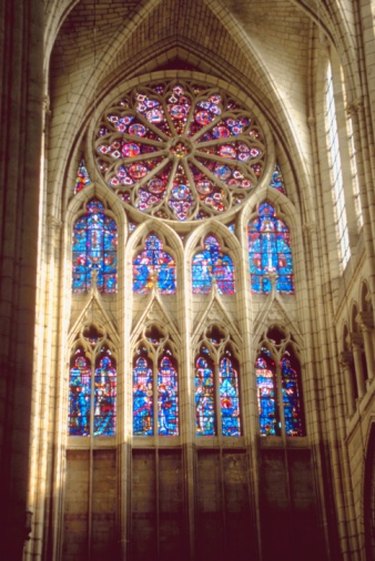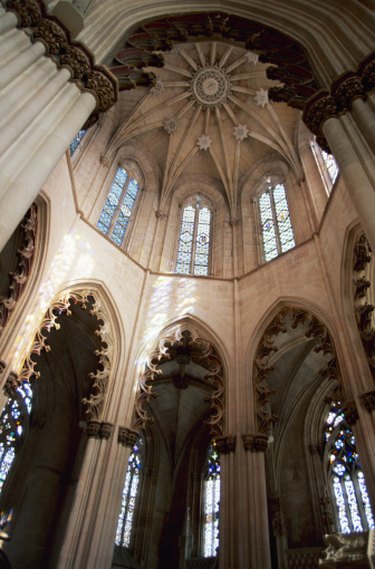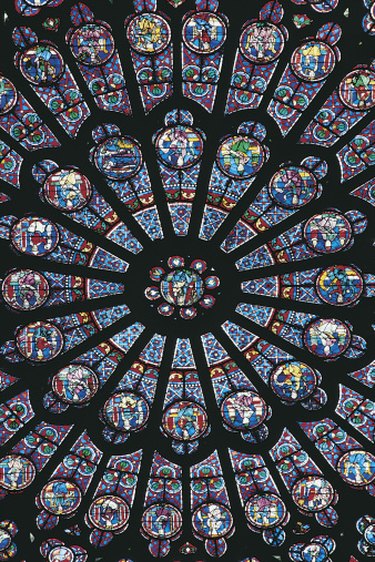
While the origins of stained glass are unknown, the Gothic period of architecture saw a blossoming in the use of stained glass in its great cathedrals. In addition to artistic practicality, glass craftsmen found the mysterious qualities of glass exemplary to represent the religious and spiritual ideologies of the period, which they steadily honed to a fine art.
Practical Role
Video of the Day

Architecturally, the most foundational role of Gothic stained glass windows was to admit enormous amounts of light into the cathedral. In this sense, the glass functioned both as a practical means to illuminate the interior and in contrast to Romanesque architecture -- which favored massive walls and small window openings -- to create an atmosphere of vast, soaring spaces and thin, curtainlike walls.
Video of the Day
Spiritual Function

In addition to the spatial and lighting effects that giant windows created, Gothic stained glass windows also carried a spiritual quality. The colored panes -- created by adding various metallic salts and oxides -- glowed brilliantly like jewels when light passed through them, creating an experience laden with awe and mystery, and conveying the importance of light in accordance with the religious symbolism of the time.
Illuminated Narratives

Stained glass windows also served as illustrative tools, intended both to educate and inspire. Panels in Gothic cathedrals often depicted biblical scenes or important moments from the lives of saints. Scenes and stories could be contained to one window, or progress successively throughout a series of windows. However, these narratives were meant for people to not only "read," but also to experience on a spiritual level as objects of image, light, color and mystery.
An Acknowledgment of Patronage
One function of stained glass windows that cannot be ignored was its role as a means to acknowledge the supporters who funded and labored to construct the cathedral, namely patrons and workers' guilds. Likenesses of such people would be depicted within a panel, oftentimes in the immediate foreground, kneeling near the sides of the panel.